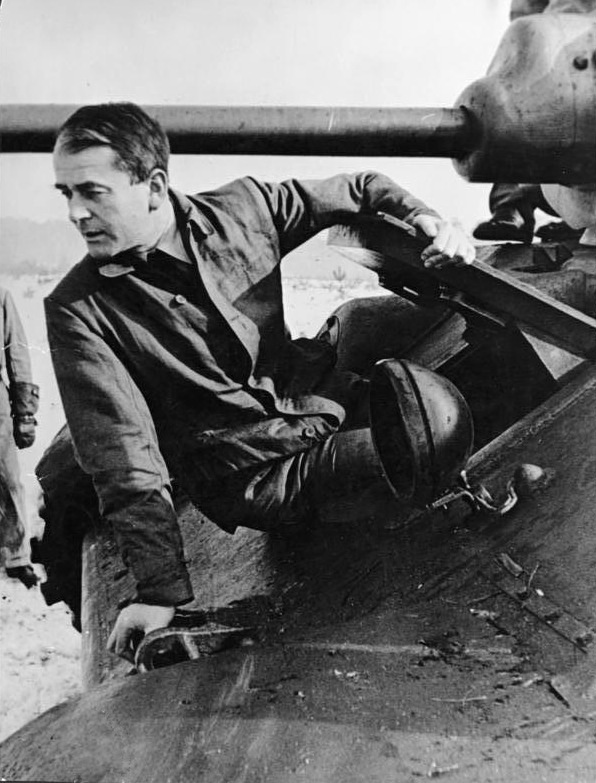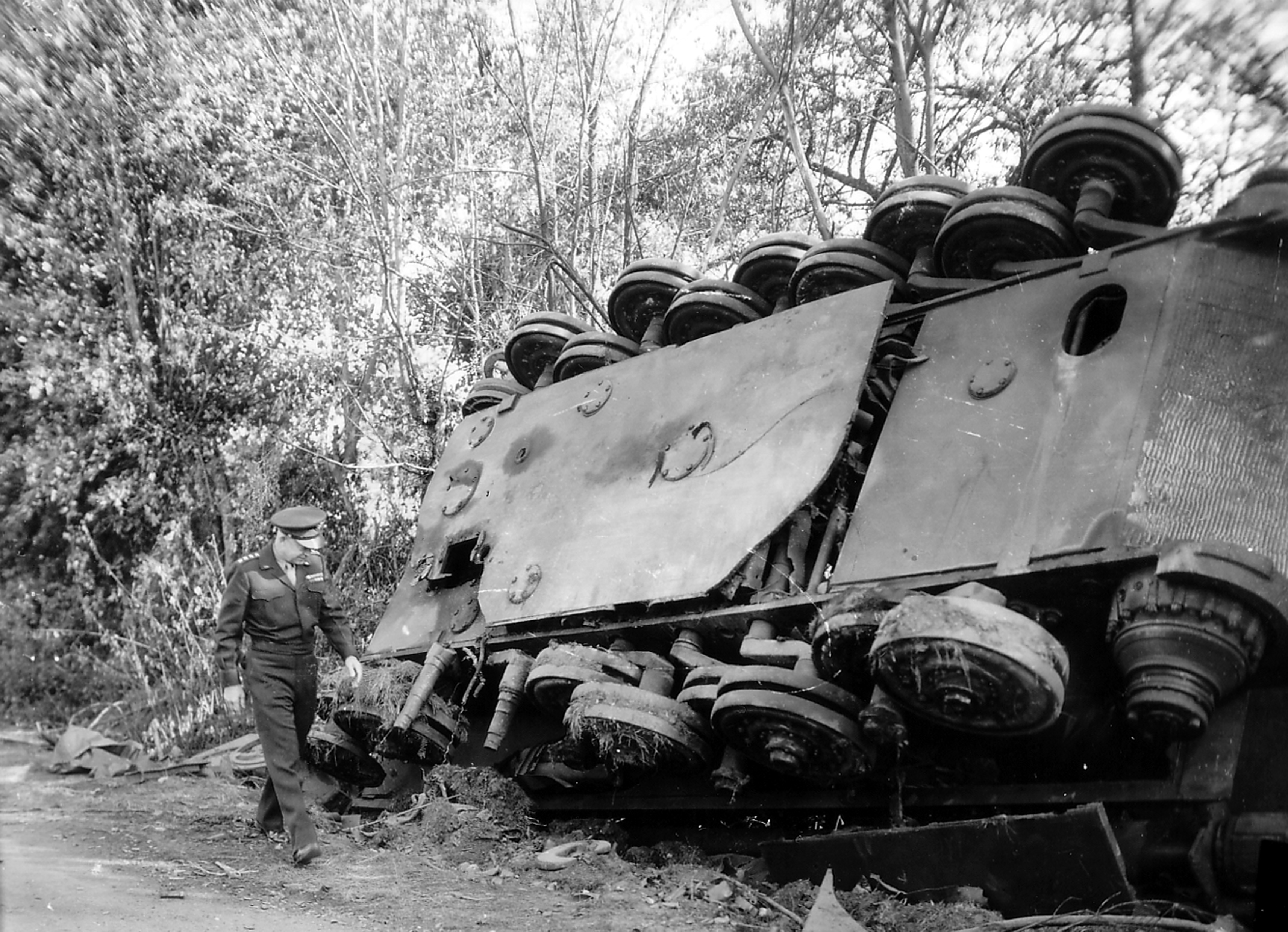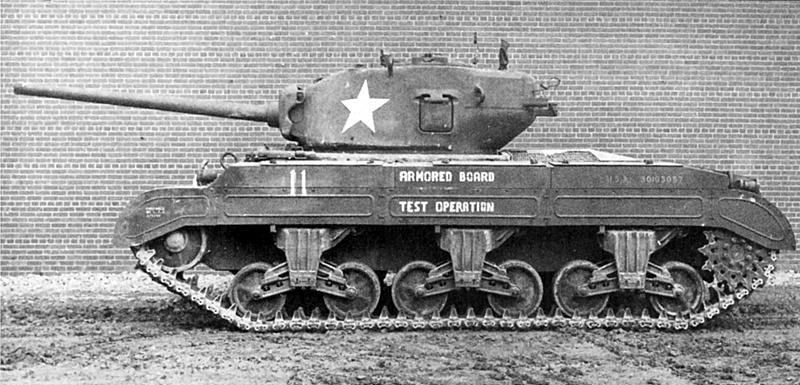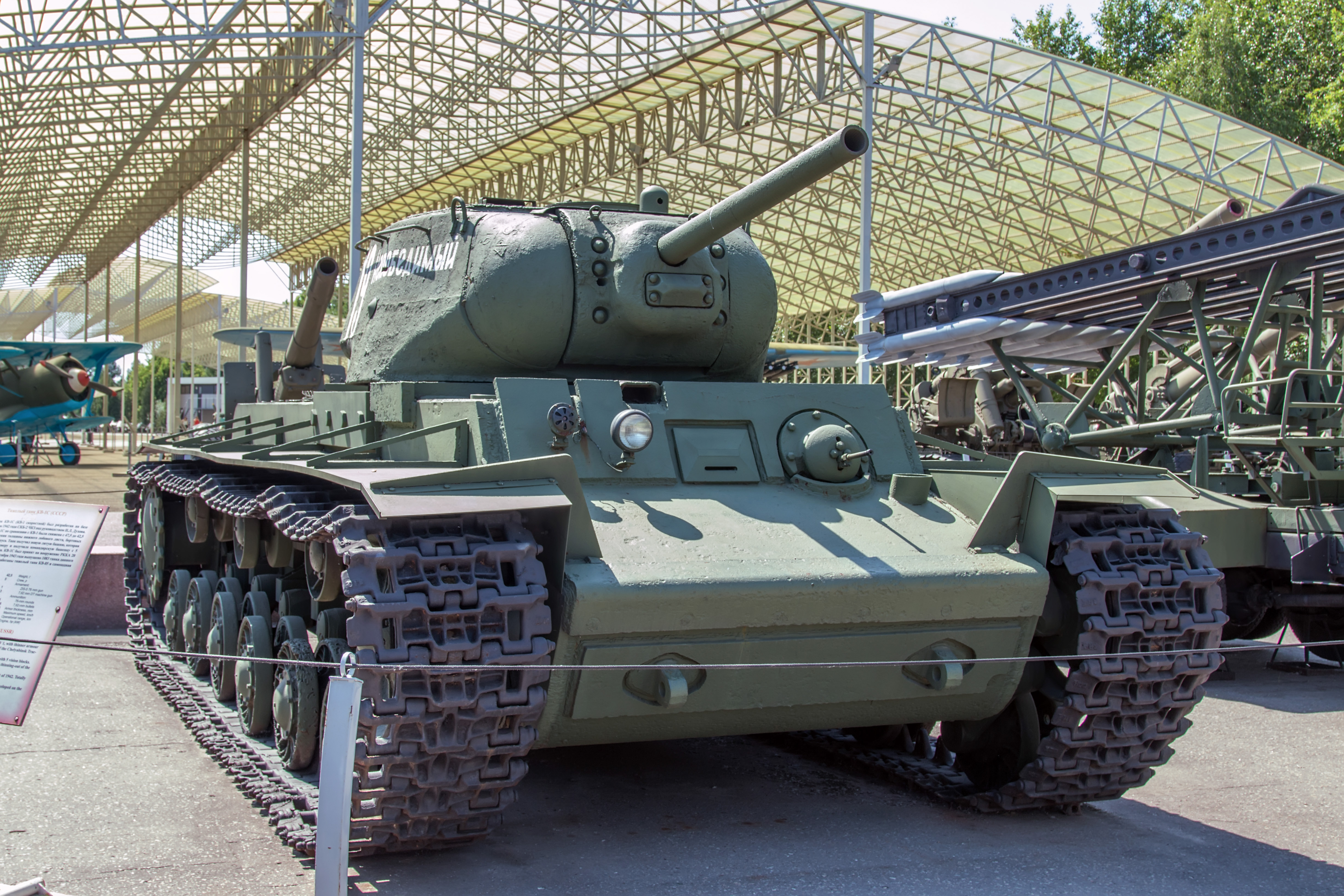|
Shot Trap
A shot trap is a deficiency in an armoured vehicle's design. It is a location where a shell that has struck but fails to penetrate may ricochet in such a manner as to hit another area of the vehicle where it is more likely to cause damage. For example, the initial turret design of the Panther, Tiger II, M26 Pershing and KV-1 tanks had shot traps. The lower edge of the curved mantlet acted as a shot trap by deflecting incoming shots downwards towards the hull roof or into the turret ring where the shell could potentially jam the traverse mechanism. In an attempt to minimize the shot trap potential, some late production Panther G and the M26 Pershing T26E5 prototype modified the lower edge of the mantlet. The final Tiger II production turret did not feature the curved front of the early turret, instead using a flat plate sloped back 10 degrees.Jentz and Doyle 1993, pp. 13–16. File:Munster Koenigstiger Porscheturm Modell detail.jpg, alt=A tank turret with a front face which ... [...More Info...] [...Related Items...] OR: [Wikipedia] [Google] [Baidu] |
Armoured Fighting Vehicle
An armoured fighting vehicle (AFV) is an armed combat vehicle protected by armour, generally combining operational mobility with offensive and defensive capabilities. AFVs can be wheeled or tracked. Examples of AFVs are tanks, armoured cars, assault guns, self-propelled guns, infantry fighting vehicles, and armoured personnel carriers. Armoured fighting vehicles are classified according to their characteristics and intended role on the battlefield. The classifications are not absolute; two countries may classify the same vehicle differently, and the criteria change over time. For example, relatively lightly armed armoured personnel carriers were largely superseded by infantry fighting vehicles with much heavier armament in a similar role. Successful designs are often adapted to a wide variety of applications. For example, the MOWAG Piranha, originally designed as an APC, has been adapted to fill numerous roles such as a mortar carrier, infantry fighting vehicle, and ass ... [...More Info...] [...Related Items...] OR: [Wikipedia] [Google] [Baidu] |
Shell (projectile)
A shell, in a military context, is a projectile whose payload contains an explosive, incendiary, or other chemical filling. Originally it was called a bombshell, but "shell" has come to be unambiguous in a military context. Modern usage sometimes includes large solid kinetic projectiles that is properly termed shot. Solid shot may contain a pyrotechnic compound if a tracer or spotting charge is used. All explosive- and incendiary-filled projectiles, particularly for mortars, were originally called ''grenades'', derived from the French word for pomegranate, so called because of the similarity of shape and that the multi-seeded fruit resembles the powder-filled, fragmentizing bomb. Words cognate with ''grenade'' are still used for an artillery or mortar projectile in some European languages. Shells are usually large-caliber projectiles fired by artillery, armored fighting vehicles (e.g. tanks, assault guns, and mortar carriers), warships, and autocannons. The shape ... [...More Info...] [...Related Items...] OR: [Wikipedia] [Google] [Baidu] |
Ricochet
A ricochet ( ; ) is a rebound, bounce, or skip off a surface, particularly in the case of a projectile. Most ricochets are caused by accident and while the force of the deflection decelerates the projectile, it can still be energetic and almost as dangerous as before the deflection. The possibility of ricochet is one of the reasons for the common firearms safety rule "Never shoot at a flat, hard surface." Ricochets can occur with ''any'' caliber, but short or round ricocheting bullets may not produce the audible whine caused by tumbling irregular shapes. Ricochets are a hazard of shooting because, for as long as they retain sufficient velocity, ricocheting bullets or bullet fragments may cause collateral damage to animals, objects, or even the person who fired the shot. Variables Ricochets occur when a bullet or bullet fragment is deflected by an object rather than penetrating and becoming embedded in that object. Ricochet behavior may vary with bullet shape, bullet material, ... [...More Info...] [...Related Items...] OR: [Wikipedia] [Google] [Baidu] |
Panther Tank
The Panther tank, officially ''Panzerkampfwagen V Panther'' (abbreviated PzKpfw V) with Sonderkraftfahrzeug, ordnance inventory designation: ''Sd.Kfz.'' 171, is a German medium tank of World War II. It was used on the Eastern Front (World War II), Eastern and Western Front (World War II), Western Fronts from mid-1943 to the end of the war in May 1945. On 27 February 1944 it was redesignated to just ''PzKpfw Panther'', as Hitler ordered that the Roman numeral "V" be deleted. In contemporary English-language reports it is sometimes referred to as the "Mark V". The Panther was intended to counter the Soviet T-34 medium tank and to replace the Panzer III and Panzer IV. Nevertheless, it served alongside the Panzer IV and the heavier Tiger I until the end of the war. It had excellent firepower, protection and mobility, although its reliability was less impressive. The Panther was a compromise. While having essentially the same Maybach V12 petrol (690 hp) engine as the Tiger I, ... [...More Info...] [...Related Items...] OR: [Wikipedia] [Google] [Baidu] |
Tiger II
The Tiger II is a German heavy tank of the Second World War. The final official German designation was ''Panzerkampfwagen'' Tiger ''Ausf''. B,'' Panzerkampfwagen'' – abbr: ''Pz.'' or ''Pz.Kfw.'' (English: "armoured fighting vehicle"), ''Ausf.'' is abbreviation of ''Ausführung'' (English: variant). The full titles ''Panzerkampfwagen'' Tiger ''Ausf''. B and ''Panzerbefehlswagen'' Tiger ''Ausf''. B (for the command version) were used in training and maintenance manuals and in organisation and equipment tables. (Jentz and Doyle 1997). Also sometimes referred to as "Pz. VI ''Ausf'' B", not to be confused with "Pz. VI ''Ausf'' E”, which was the Tiger I. often shortened to Tiger B.Jentz and Doyle 1993, p. 16. The ordnance inventory designation was ''Sd.Kfz.'' 182. ( ''Sd.Kfz.'' 267 and 268 for command vehicles). It was known as King Tiger by Allied soldiers, and is also known under the informal name ''Königstiger'' (the German name for the Bengal tiger which translates literal ... [...More Info...] [...Related Items...] OR: [Wikipedia] [Google] [Baidu] |
M26 Pershing
The M26 Pershing was a heavy tank/medium tank of the United States Army. It was used in the last months of World War II during the Invasion of Germany and extensively during the Korean War. The tank was named after General of the Armies John J. Pershing, who led the American Expeditionary Force in Europe in World War I. The M26 was intended as a replacement of the M4 Sherman, but a prolonged development period meant that only a small number saw combat in Europe. Based on the criteria of firepower, mobility, and protection, US historian R. P. Hunnicutt ranked the Pershing behind the German Tiger II heavy tank, but ahead of the Tiger I heavy and Panther medium tanks. It was withdrawn in 1951 in favor of its improved derivative, the M46 Patton, which had a more powerful and reliable engine and advanced suspension. The lineage of the M26 continued with the M47 Patton, and was reflected in the new designs of the later M48 Patton and M60 Patton. Production history Development ... [...More Info...] [...Related Items...] OR: [Wikipedia] [Google] [Baidu] |
KV-1
The Kliment Voroshilov (KV) tanks are a series of Soviet heavy tanks named after the Soviet defence commissar and politician Kliment Voroshilov who operated with the Red Army during World War II. The KV tanks were known for their heavy armour protection during the early stages of the war, especially during the first year of the German invasion of the Soviet Union. In certain situations, even a single KV-1 or KV-2 supported by infantry could halt German formations. The German ''Wehrmacht'' at that time rarely deployed its tanks against KVs, as their own armament was too poor to deal with the "''Russischer Koloss''" – "Russian Colossus". The KV tanks were practically immune to the 3.7 cm KwK 36 and howitzer-like, short-barreled 7.5 cm KwK 37 guns mounted, respectively, on the early Panzer III and Panzer IV tanks fielded by the invading German forces. Until the Germans developed more effective guns, the KV-1 was invulnerable to almost any German weapon except the 8.8 cm Flak gun. ... [...More Info...] [...Related Items...] OR: [Wikipedia] [Google] [Baidu] |




